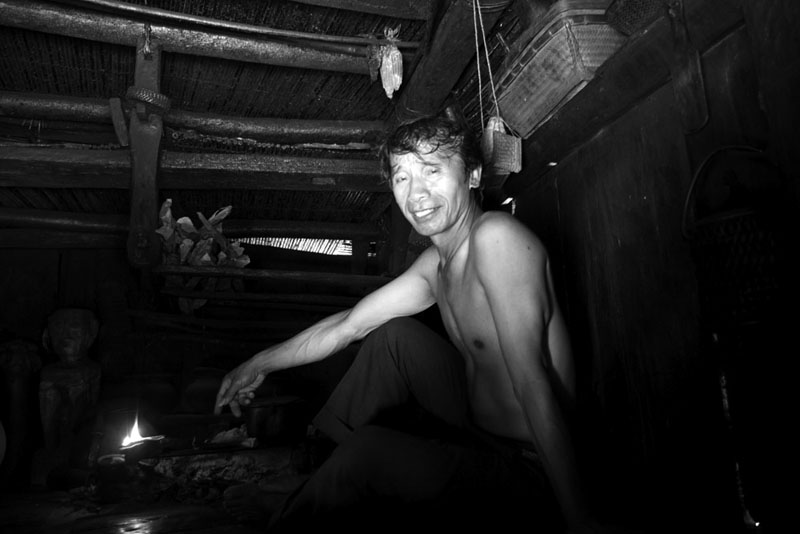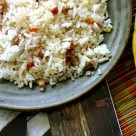Rice is the most important staple food in most part of the human population. In the Philippines, we eat rice three times a day but sometimes it could be even more ![]() . We could eat rice as a dessert and even in snacks! A real testimony on this enduring love affair between Filipinos and rice!
. We could eat rice as a dessert and even in snacks! A real testimony on this enduring love affair between Filipinos and rice!
But I bet, many of you knew very little about Philippines mountain rice. This rice is absolutely delicious. It’s brown and red rather than plain white like the rice grown in the lowlands.
In the northern part of the mountainous region of the Philippines rice is cultivated in the beautifully arranged hand-made terraces. Farmers use no fertilizers, no pesticides only their savoir-faire handed from generation to generation. A real labour of love. There rice is never consumed elsewhere because there is no excess to bring them to the markets in the city. They only plant what their family could consume, if there is an excess they share it in the neighborhood. Planting and harvesting them requires elaborate rituals and traditions unknown to city dwellers and tourists. Bundles of rice are cut and dried under the sun in the morning and kept under the roof in the afternoon to avoid the afternoon rain.
Here are the photos of my recent trip to the north, my eight hours long and bumpy ride plus 2 hours of trek to this region was absolutely magic.
Some useful tips for rice
Washing Rice
In Asia, washing rice is very important. In the same casserole where you will be cooking the rice wash the rice with the clean running water. Wash the grain using your hand to remove all dirt and unnecessary particles or on it. Traditionally we pick the impurities by hand but rice nowadays are much cleaner than the olden times. We wash rice 3 times or until the water becomes clearer. The rice wash is normally use in making soups like sinigang .
Cooking
When we cook rice we normally use our hand to determine the amount of water to put. I know it is not so scientific but our mothers and their mothers taught them that way. When water is added on the rice put your palm, if the water level falls in the middle of your fingers then it is perfect. The less complicated version is: 1 and 1/2 cups of water for every cup of rice. Cook them covered on high fire and once the water started to boil, lower fire and simmer it half covered. We use pandan leaves to perfume our steamed rice. If you have the luxury of adding some to your rice you will smell the difference ![]() . You just need to add two to three leaves and let it boil together with your rice.
. You just need to add two to three leaves and let it boil together with your rice.
But of course the easiest way of cooking them is with your rice cooker.
Storage and Usage
If you miscalculate your rice and there are left over remember you can always store them. Cooked rice when cooked and stored properly in the fridge could be kept for three days. You can use clean tupperwares and seal them correctly. Use microwave when heating them, you can add a tablespoon of water to avoid drying them. Reheat them for 30 seconds or more. Left-over rice is often used in making friedrice in the Philippines. For recipe you can check it here.
The black and white photo of rice is my entry to this weeks Black and White Wednesday Week 40 an event created by Susan of The Well Seasoned Cook, this week’s event is hosted by Anusha of Tomato Blues, if you are interested in joining this event here are the guidelines and to know who will be hosting next week.
Tagged: brown rice, mountain rice, rice, rice cooking








 Mabuhay! This is a place for all Pinoy food lovers! It's about time the world discovers the wonders of Filipino cuisine. Hop on and enjoy our daily culinary journey.
Mabuhay! This is a place for all Pinoy food lovers! It's about time the world discovers the wonders of Filipino cuisine. Hop on and enjoy our daily culinary journey. 





Love all the pictures, they are quiet amazing!
[...] Sharing this Atis Photograph at Black and White Wednesday Week 41, event created by Susan of The Well Seasoned Cook and hosted by Cafe Lynnlu. You can check my other previous entry. [...]